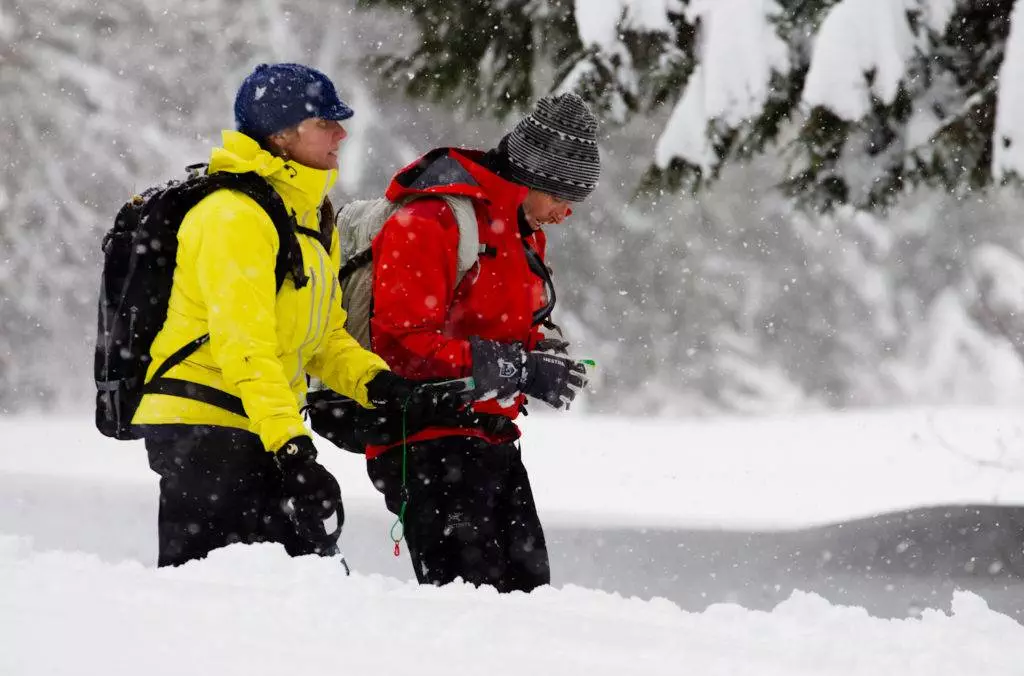The amount of consumer electronics carried by skiers and snowboarders on a daily basis has increased significantly in recent years. Smartphones, GoPros, cameras and GPS tracking devices all have their place, but when setting foot into the backcountry it’s the most important piece of electronics – the avalanche transceiver – that needs to do its job in order to keep you alive. All the other pieces of technology can cause avalanche transceiver interference affecting your beacon’s signal and search capability. This article goes into a bit more detail, but if you need a quick rule to follow, store your items at least 20cm away from your transceiver when transmitting and about 50cm when in search mode.

Avalanche Transceiver Interference – Breaking it Down
Let’s first take a look at how the transceiver works. When transmitting (“send” mode), each transceiver emits an electromagnetic pulse at the industry-regulated frequency of 457kHz. A transceiver in search mode receives that pulse and interprets it using the internal antennae, which is outputted to the searcher as a direction and distance. But the searching transceiver also picks up other signals that occur at the same frequency. These polluting signals are known as radio frequency noise. If there’s enough said noise in the 457kHz range, the interference can cause false signals and/or erratic readings on the searching transceiver’s display.
The concept of radio frequency noise is much like the audible noise we encounter in a busy public space like a pub or bar. When you get there early before the crowds, you can have a conversation with a friend without the background noise posing a problem. Later on, however, the room is filled with other people around you talking and the music has probably gotten louder, hearing your friend across the table from you becomes all the more difficult.

Active VS Passive Interference
There are two types of interference that can cause errors with a transceiver signal. Active interference comes from electronics that actively transmit frequencies such as phones, iPods, GPS devices, cameras, and headlamps, pretty much anything with a battery in it.
It’s important to note here that Airplane Mode does not reduce the amount of radio frequency noise. The phone needs to be turned off and stored a sufficient distance away from the transceiver.
Passive interference comes from sources that can partially block or warp the transceiver signal, usually in the form of metal or magnets. This includes but is not limited to shovel blades, aluminum foil, granola wrappers, magnets on the pockets of your jacket and your seasons pass with that Radio Frequency Identification (RFID) chip embedded inside. While these items don’t interfere as much as active or powered transmitters, it’s better to keep them inside your pack or the requisite distance from your transceiver.

How to Reduce Avalanche Transceiver Interference
The best way to keep your transceiver doing its job properly is to keep all sources of active and passive interference as far from it as possible. That means storing your phone or camera in your pants pocket or pack, not in the chest pockets. Turn off all electronics completely that you’re not using, otherwise try to store it at least 20cm from the transceiver. If and when you do need to perform a search, remember to use the correct method and keep the transceiver outstretched from your body. If you suspect there’s interference and can’t quickly find the source, reduce your search strip widths to around 30 metres.
Want to know more about advanced avalanche search technique? Our AST 2 course covers multiple-burial searches as part of its curriculum. For more technical analysis of transceiver interference, check out these industry blogs from Mammut and BCA
Written By: Vince Shuley

